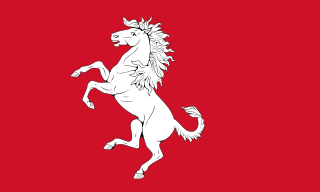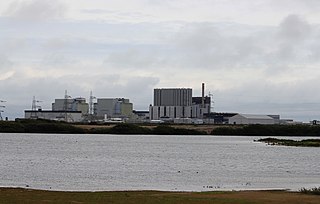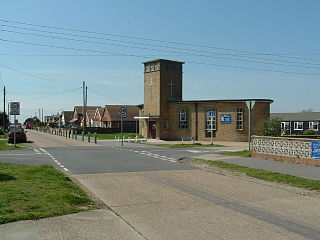Related Research Articles

Kent is a county in South East England and one of the home counties. It borders Greater London to the north-west, Surrey to the west and East Sussex to the south-west, and Essex to the north across the estuary of the River Thames; it faces the French department of Pas-de-Calais across the Strait of Dover. The county town is Maidstone. It is the fifth most populous county in England, the most populous non-Metropolitan county and the most populous of the home counties.

The Mary Rose is a carrack-type warship of the English Tudor navy of King Henry VIII. She served for 33 years in several wars against France, Scotland, and Brittany. After being substantially rebuilt in 1536, she saw her last action on 19 July 1545. She led the attack on the galleys of a French invasion fleet, but sank in the Solent, the strait north of the Isle of Wight.

Maritime archaeology is a discipline within archaeology as a whole that specifically studies human interaction with the sea, lakes and rivers through the study of associated physical remains, be they vessels, shore-side facilities, port-related structures, cargoes, human remains and submerged landscapes. A specialty within maritime archaeology is nautical archaeology, which studies ship construction and use.

The Newport Ship is a mid-fifteenth-century sailing vessel discovered by archaeologists in June 2002 in the city of Newport, South East Wales. It was found on the west bank of the River Usk, which runs through the city centre, during the building of the Riverfront Arts Centre; from which process it sustained some damage. The official name of the vessel is now the Newport Medieval Ship, to help distinguish it from other historical vessels.

Romney Marsh is a sparsely populated wetland area in the counties of Kent and East Sussex in the south-east of England. It covers about 100 square miles (260 km2). The Marsh has been in use for centuries, though its inhabitants commonly suffered from malaria until the 18th century. Due to its location, geography and isolation, it was a smuggler's paradise between the 1600s and 1800s. The area has long been used for sheep pasture: Romney Marsh sheep are considered one of the most successful and important sheep breeds. Criss-crossed with numerous waterways, and with some areas lying below sea level, the Marsh has over time sustained a gradual level of reclamation, both through natural causes and by human intervention.

Stoke Mandeville is a village and civil parish in the Vale of Aylesbury in Buckinghamshire, England. It is located three miles (4.9 km) from Aylesbury and 3.4 miles (5.5 km) from the market town of Wendover. Although a separate civil parish, the village falls within the Aylesbury Urban Area. According to the Census Report the area of this parish is 1,460 acres (5.9 km2).

Lydd is a town and electoral ward in Kent, England, lying on Romney Marsh. It is one of the larger settlements on the marsh, and the most southerly town in Kent. Lydd reached the height of its prosperity during the 13th century, when it was a corporate member of the Cinque Ports, a "limb" of Romney. Actually located on Denge Marsh, Lydd was one of the first sandy islands to form as the bay evolved into what is now called Romney Marsh.

The Dungeness nuclear power stations are a pair of non-operational nuclear power stations located on the Dungeness headland in the south of Kent, England.

Dungeness is a headland on the coast of Kent, England, formed largely of a shingle beach in the form of a cuspate foreland. It shelters a large area of low-lying land, Romney Marsh. Dungeness spans Dungeness Nuclear Power Station, the hamlet of Dungeness, and an ecological site at the same location. It lies within the civil parish of Lydd.

An acoustic mirror is a passive device used to reflect and focus (concentrate) sound waves. Parabolic acoustic mirrors are widely used in parabolic microphones to pick up sound from great distances, employed in surveillance and reporting of outdoor sporting events. Pairs of large parabolic acoustic mirrors which function as "whisper galleries" are displayed in science museums to demonstrate sound focusing.
P&O Ferries is a British shipping company that operates ferries from United Kingdom to Ireland, and to Continental Europe. The company was created in 2002 through mergers and acquisitions within P&O. It has been owned by Dubai-based DP World since 2019.

Mensun Bound is a British maritime archaeologist born in Stanley, Falkland Islands. He is best known as director of exploration for two expeditions to the Weddell Sea which led to the rediscovery of the Endurance, in which Sir Ernest Shackleton and a crew of 27 men sailed for the Antarctic on the 1914–1917 Imperial Trans-Antarctic Expedition. The ship sank after being crushed by the ice on 21 November 1915. It was rediscovered by the Endurance22 expedition on 5 March 2022.

Greatstone is a beach-side town, the third town up from the "point" of the Romney Marsh area of Kent. It is situated near the largest town there, New Romney in Kent, England. Although permission was given for a company to construct large numbers of homes and facilities in the 1920s, only a small number were actually built. There was widespread development in the 1960s and 1970s, however, leading to a sizable community. The church of St Peter's, built in the 1960s, is a daughter church of All Saints, Lydd, in which parish half of Greatstone is situated. It is in the civil parish of Lydd. There is a small group of shops at one end of the town, and the other end simply melds into Lydd-on-Sea. The local school is the Greatstone Primary School, from which most students either go on to The Marsh Academy, the Folkestone School for Girls or the Harvey Grammar School.
Digging For Britain is a British television series focused on last and current year archaeology. The series is made by 360 Production for the BBC and is presented by Alice Roberts. It was first aired in August 2010.

The Bone Wars, also known as the Great Dinosaur Rush, was a period of intense and ruthlessly competitive fossil hunting and discovery during the Gilded Age of American history, marked by a heated rivalry between Edward Drinker Cope and Othniel Charles Marsh. Each of the two paleontologists used underhanded methods to try to outdo the other in the field, resorting to bribery, theft, and the destruction of bones. Each scientist also sought to ruin his rival's reputation and cut off his funding, using attacks in scientific publications.

Kentish ragstone is a hard grey limestone in Kent, England, drawn from the geological sequence known as the Hythe Beds of the Lower Greensand. For millennia it has been quarried for use both locally and farther afield.
This page lists major archaeological events of 2017.
This page lists major events of 2019 in archaeology.
This page lists major events of 2020 in archaeology.
This page lists significant events of 2022 in archaeology.
References
- ↑ "Remains of Old Ship found at Denge Quarry". Cemex UK News. May 2022. Retrieved 1 January 2023.
- 1 2 3 Weinman, Steve (1 January 2023). "16th-century ship found - in Kent quarry lake". divernet.com. Retrieved 1 January 2023.
- 1 2 Pickford, James (30 December 2022). "Elizabethan ship found in 'remarkable condition' in Kent quarry". Financial Times. Retrieved 1 January 2023.
- ↑ "Digging for Britain Season 10". Radio Times. Retrieved 1 January 2023.
- ↑ "Digging for Britain - Series 10: 1. Roman Towns and Tudor Shipwrecks". BBC iPlayer. Retrieved 1 January 2023.